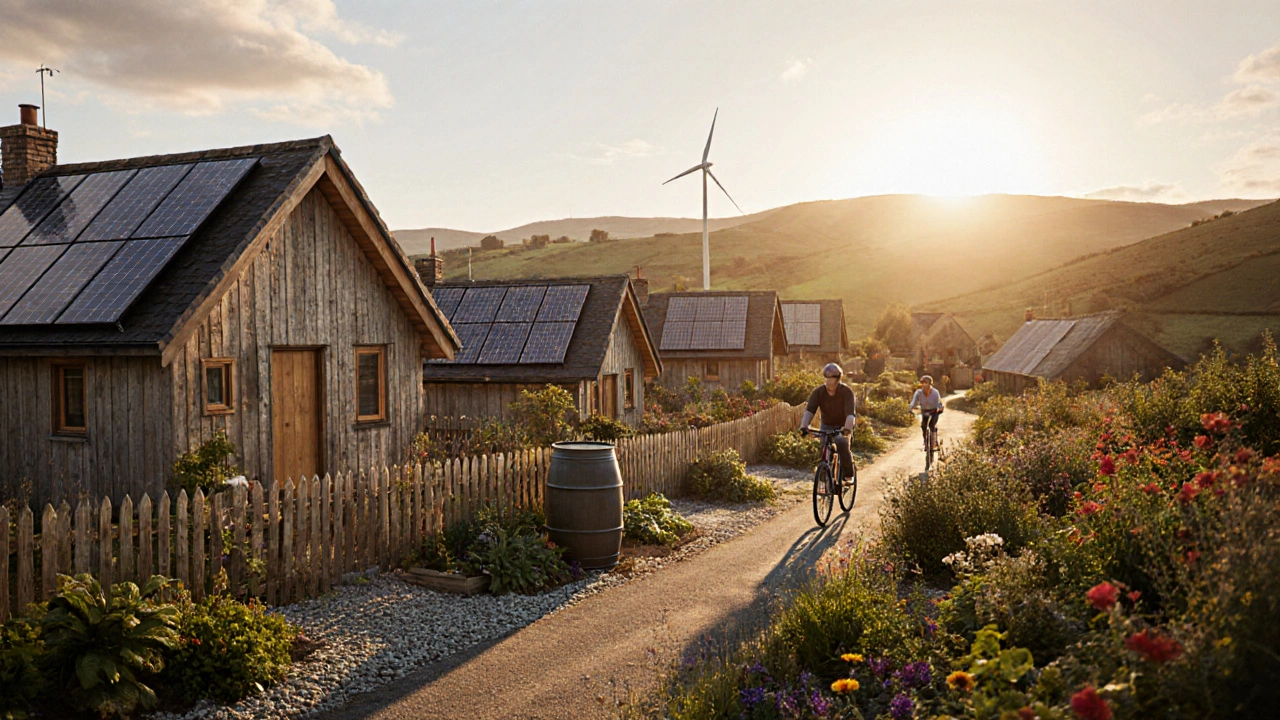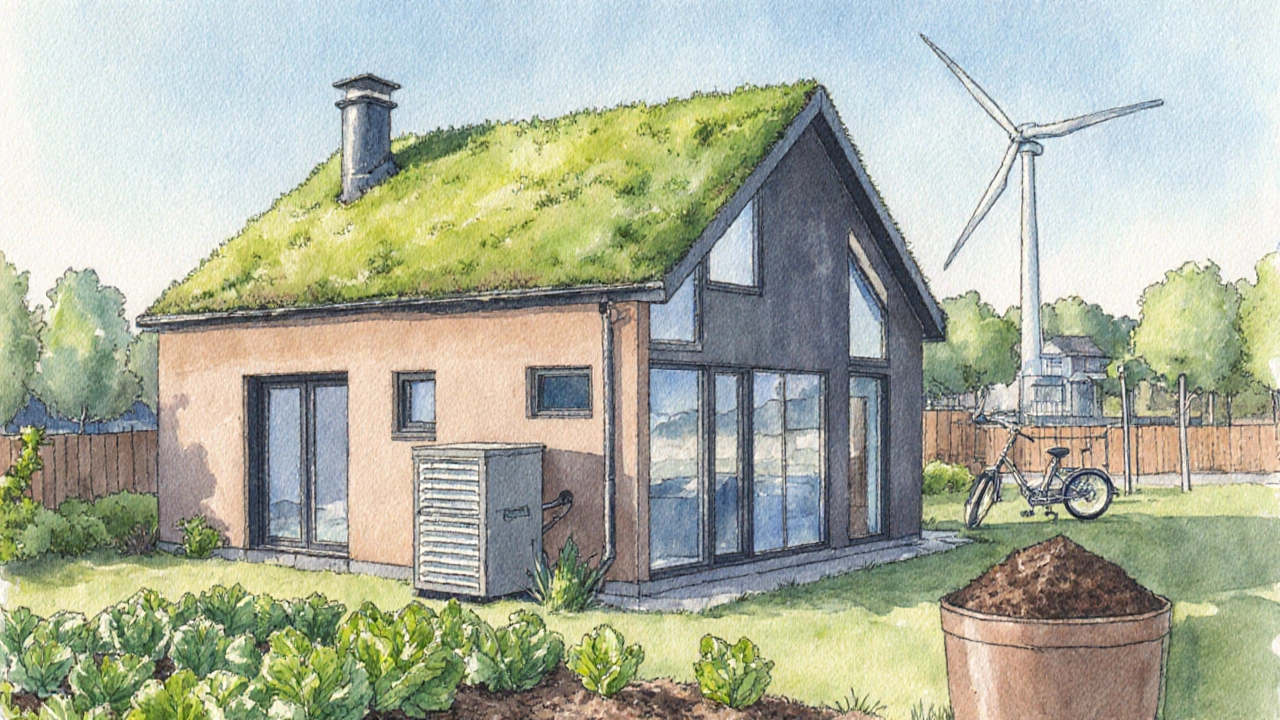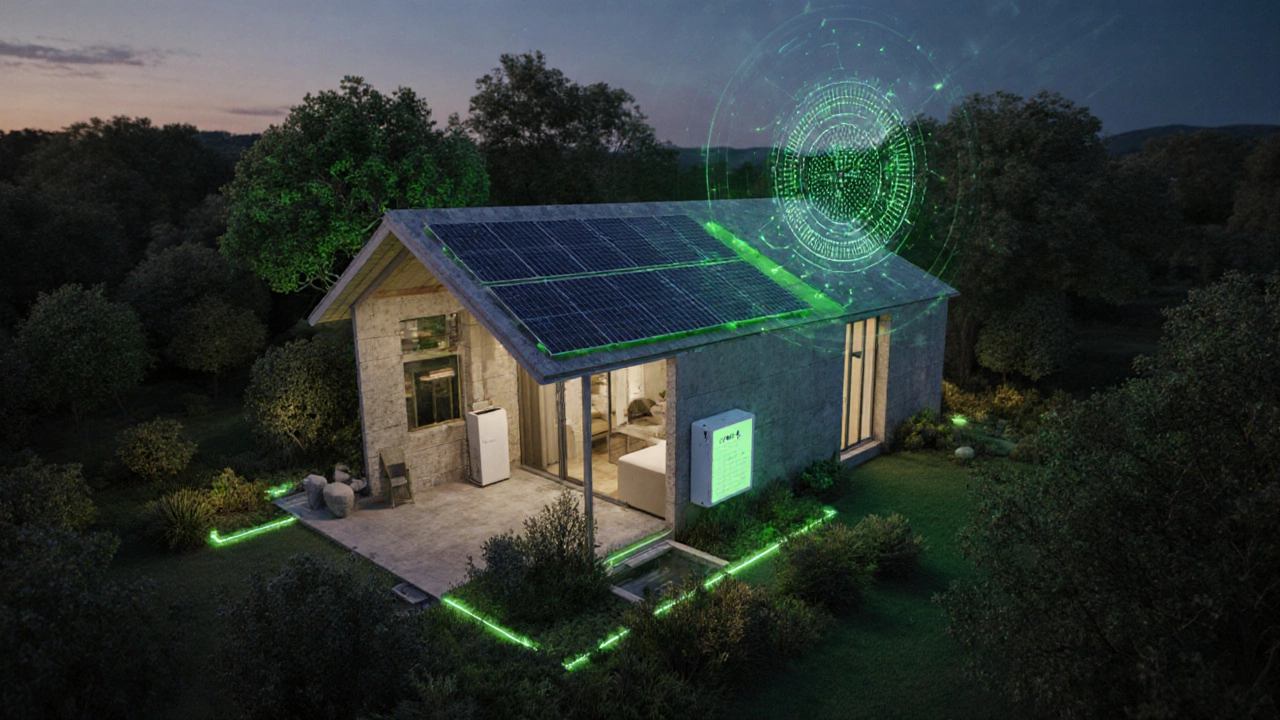Most Sustainable Places to Live: Eco‑Friendly Cottage Communities Ranked

Sustainable Cottage Community Calculator
Customize Your Sustainability Priorities
Adjust the sliders below to reflect how important each sustainability factor is to you. The calculator will then score communities based on your preferences.
Your Custom Sustainability Rankings
Higher scores indicate better alignment with your sustainability priorities.
Adjust your priorities and click "Calculate Your Rankings" to see your personalized results.
Finding a spot that feels like home while keeping the planet healthy is a real puzzle. People are swapping city apartments for tiny eco‑friendly cottages, but not every location offers the same green perks. Below we break down the factors that make a place truly sustainable, showcase the top cottage‑friendly regions, and hand you a checklist to decide if a community matches your low‑impact lifestyle.
What makes a place "sustainable"?
Before scouting locations, it helps to know which pieces fit the sustainability puzzle. Think of a place as a living system; every element-energy, water, waste, food, transport-feeds into its carbon footprint.
- Energy source: Solar, wind, hydro, or community‑owned micro‑grids that cut reliance on fossil fuels.
- Building standards: Passive‑house design, LEED certification, or locally sourced timber that reduces embodied carbon.
- Water management: Rainwater harvesting, grey‑water recycling, and low‑flow fixtures.
- Waste strategy: Composting, zero‑waste policies, and community recycling hubs.
- Food supply: Community gardens, farmers‑markets, and proximity to organic farms.
- Mobility options: Bike lanes, electric‑vehicle charging stations, and reliable public transit.
When a town checks most of these boxes, residents can truly call it a Eco‑friendly Cottage Community, a settlement where small homes are built and lived in harmony with nature.
Top five sustainable cottage‑friendly places in 2025
Using the criteria above, we scored dozens of regions and narrowed it down to five that consistently rank high for low carbon footprints, renewable energy use, and strong community programs.
| Location | Avg. household CO₂ (kg/yr) | Renewable energy % | Water reuse rate | Community garden acres | Cost of living index* |
|---|---|---|---|---|---|
| Portland, Oregon (US) | 2,800 | 68% | 45% | 12 | 112 |
| Vermont County (US) | 2,500 | 73% | 52% | 15 | 108 |
| Boulder, Colorado (US) | 2,600 | 61% | 48% | 10 | 119 |
| Copenhagen suburbs (DK) | 2,200 | 80% | 57% | 18 | 130 |
| Wollaston, UK | 2,400 | 75% | 50% | 14 | 105 |
* Index based on Numbeo 2025 data; 100 = US national average.
All five locations boast thriving cottage‑building scenes, local co‑ops that share solar panels, and policies that reward zero‑waste practices.
Deep dive: Why these places excel
Portland, Oregon leads with a strong municipal solar incentive that covers up to 30% of installation costs for new builds. The city’s “Green Cottages” ordinance requires any new cottage under 1,200 sq ft to meet passive‑house standards. Residents also benefit from a city‑wide bike‑share program that cuts car trips by 22% on average.
Vermont County shines because of its land‑trust model. Local nonprofits own large tracts of forest, letting cottage owners build on plots with strict low‑impact covenants. The region’s micro‑hydro stations generate enough power for 85% of homes, keeping electricity bills low.
Boulder, Colorado invests heavily in community solar farms. Even cabins off the grid can subscribe to a shared solar buffer that feeds excess energy back into the grid at night. Boulder’s public transit recently added electric shuttles that stop at major cottage clusters.
Copenhagen suburbs benefit from Denmark’s national goal of 100% renewable electricity by 2030. Every new cottage must incorporate a heat‑recovery ventilation system, slashing heating demand by up to 60%.
Wollaston, UK has a pioneering water‑reuse scheme where rainwater collected on cottage roofs feeds directly into communal gardens and toilet flushing systems. The town’s “Zero‑Waste Cottage” pilot reduced household waste to 180 kg per year, half the UK average.

How to evaluate a potential cottage community
Use this quick checklist when you tour a site or browse listings. Tick the boxes that matter most to your lifestyle, then rank each option on a 1‑5 scale.
- Is renewable energy integrated (solar panels, wind turbines, community grid)?
- Do building codes require passive‑house or similar low‑energy standards?
- Are there rainwater or grey‑water systems in place?
- What waste‑diversion programs exist (compost, recycling, e‑waste drop‑off)?
- Is there a local food network (farmers’ market, community garden, CSA program)?
- How accessible are non‑car transport options?
- What’s the average household carbon footprint reported by the community?
- Are there incentives or subsidies for green upgrades?
Score each community and add up the totals. The highest‑scoring spot is likely the most sustainable fit for you.
Real‑world stories: Families thriving in green cottages
Meet the Hallbergs, a Toronto couple who relocated to a Vermont County eco‑village in 2022. They built a 1,050‑sq‑ft timber‑frame cottage with straw‑bale insulation. Their monthly electricity bill dropped from CAD 120 to CAD 35 thanks to a shared solar array, and their garden supplies most of their vegetables. "Living here feels like we’re paying back the land," says Maya Hallberg.
Across the Atlantic, Danish journalist Lars Jensen moved to a Copenhagen suburb in 2021. His 950‑sq‑ft cottage uses a heat‑recovery ventilator that costs less than a typical radiator. Lars tracks his household emissions with a smart meter; his annual CO₂ output is 2.1 t, well below Denmark’s average of 5.3 t.
These anecdotes underline a common theme: small homes, community support, and smart design can shave tens of percent off a typical carbon footprint.

Future trends that will reshape sustainable cottage living
Even the greenest places evolve. Keep an eye on these upcoming shifts:
- Hydrogen‑fuel cell backup: Emerging in remote cottage clusters to provide zero‑emission power during extended cloudy periods.
- 3‑D‑printed bio‑based walls: Labs in the Netherlands are trialing hemp‑crete panels that cut construction waste by 80%.
- AI‑driven energy dashboards: Homeowners can now see real‑time carbon data and receive suggestions to shift loads to off‑peak solar.
- Carbon‑negative landscaping: Planting fast‑growing trees around cottages can offset more emissions than the home produces.
Plugging these innovations into an already green community can push the sustainability score well into the net‑zero realm.
Quick takeaways
Choosing the most sustainable place to live isn’t a one‑size‑fits‑all decision. Look for areas where renewable energy, water reuse, waste reduction, and community food systems all intersect. The five locations highlighted above consistently meet those criteria and host thriving eco‑cottage cultures. Use the checklist, compare the numbers, and picture yourself in a low‑impact home before you commit.
How much does it cost to build an eco‑friendly cottage?
Costs vary by region and material choices, but a typical 1,000 sq ft passive‑house cottage in the U.S. ranges from USD 150,000 to 200,000. Adding solar panels and rainwater systems adds roughly 10‑15% to the budget, often offset by local rebates.
Can I retrofit an existing cottage to become sustainable?
Yes. Upgrading insulation, installing a heat‑recovery ventilator, and adding a solar PV system are the three most cost‑effective retrofits. Many municipalities offer incentive programs that cover up to 30% of installation costs.
What’s the average carbon footprint of a cottage household?
In the top sustainable regions, households emit between 2,200 and 2,800 kg CO₂ per year-roughly half the national average for conventional homes.
Do I need to be off‑grid to live sustainably?
Not at all. Many sustainable cottage communities stay connected to the grid while sourcing most electricity from renewable utilities and sharing community solar.
How can I find a green cottage community near me?
Start with local land‑trusts, eco‑village directories, and regional planning offices. Look for listings that mention passive‑house, LEED, or community renewable projects.